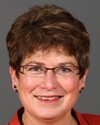Thanks very much for inviting us here this afternoon.
I'm a family physician as well as the associate executive director of health and public policy at the College of Family Physicians of Canada, and I certainly welcome this opportunity to meet with you and to discuss what the college has learned over the last several months in dealing with the H1N1 pandemic.
CFPC is the voice of family medicine in Canada. It represents over 22,000 family doctors and it's the professional organization responsible for the standards of training, certification, and lifelong learning for physicians, and for advocating on behalf of the speciality of family medicine. The CFPC champions the rights of every Canadian to high-quality health care.
After the outbreak of sudden acute respiratory syndrome, commonly called SARS, back in 2003, followed by H5N1, sometimes called avian flu, the CFPC released a paper titled The Role of the Family Doctor in Public Health and Emergency Preparedness. Many of the recommendations in that paper emphasized the critical need to communicate effectively during a public health emergency.
If there is one clear message we are delivering today it is this: the need for consistent and timely communication to and with front-line health care providers, including family doctors. Communications must be two-way. Family physicians should not only be advised about how to respond most appropriately to a public health emergency, but also be given the opportunity to ask questions of the Public Health Agency of Canada, provincial or territorial health ministries, and local public health officials.
To government's credit, communications related to H1N1 pandemic improved when compared to SARS, but it could have been better. It's the unknown potential of an infectious disease outbreak on its way to becoming a pandemic that should cause government and public health authorities to strive for optimal communications strategies.
At the recent Council of the Federation meeting in Regina, the Premier of Manitoba referred to H1N1 as a truck coming around the corner. In reflecting on his comment, The Globe and Mail extended the metaphor to the potential for a multi-vehicle pileup in the making. As the editorial concluded, this is no time for Canada to fall asleep at the wheel.
In July of this year, the Royal College of General Practitioners in the United Kingdom presented its members' views of government preparedness for pandemic influenza. Of the 11 categories of concerns identified, the majority focused on the need for more and better communications. For example, the very first concern was the lack of information and conflicting advice.
In our experience, H1N1 communication was variable. Some jurisdictions transferred a wealth of information from multiple sources that resulted in the risk of mixed messages, and others not enough, resulting in family physicians working in uncertainty.
Responsibility for communication must be defined and coordinated to decide who, for example, advises family doctors about the most suitable infection control procedures and escalating levels of precaution and isolation in clinical settings. The CFPC wants to play an important role in communicating with family physicians, but it does not want to deliver inconsistent, untimely messages.
A number of questions were asked by Canada's family physicians about access to resources during the H1N1 outbreak; for example, what masks to use and how to triage patients in practice settings. The practical answers to these questions may vary by location, but they must also recognize vulnerable populations most at risk. We may still question why Canada's first nations communities were hit hard in Canada, but waiting for research on this should not delay our commitment to respond urgently to the health care needs of the first nations peoples and other people at vulnerability with a well-defined and clear plan of action.
To summarize, the CFPC recommends the following actions.
Pandemic information must be provided in a timely and consistent manner to all family physicians and front-line health care providers. This is critical for managing patients who could potentially have the H1N1 flu and who present first to their family doctor in a practice or primary care setting during a pandemic.
Timely public health resources must be readily available, including, for example, appropriate swabs, masks, and antivirals. If local public health authorities haven't delivered these effectively during the H1N1 pandemic, what will happen when twice as many Canadians are asking for an H1N1 vaccine this fall, in comparison to our usual volumes during flu season? And that is in the midst of a potentially larger crisis created by a rejuvenated H1N1 virus.
Family physicians want to be involved in deciding how to respond to a pandemic. They want to maintain regular contact with their local public health authorities and medical officers of health. The CFPC wants to assist in the development and distribution of the most appropriate information for family physicians and other front-line providers, including clinical practice guidelines related to pandemic preparedness and response.
In closing, the CFPC and family doctors in Canada are confident that by working with local provincial or territorial and federal levels of government we can collaboratively improve our public health response to a pandemic outbreak. Canadians expect this of us.
Thank you very much, Madam Chair.



